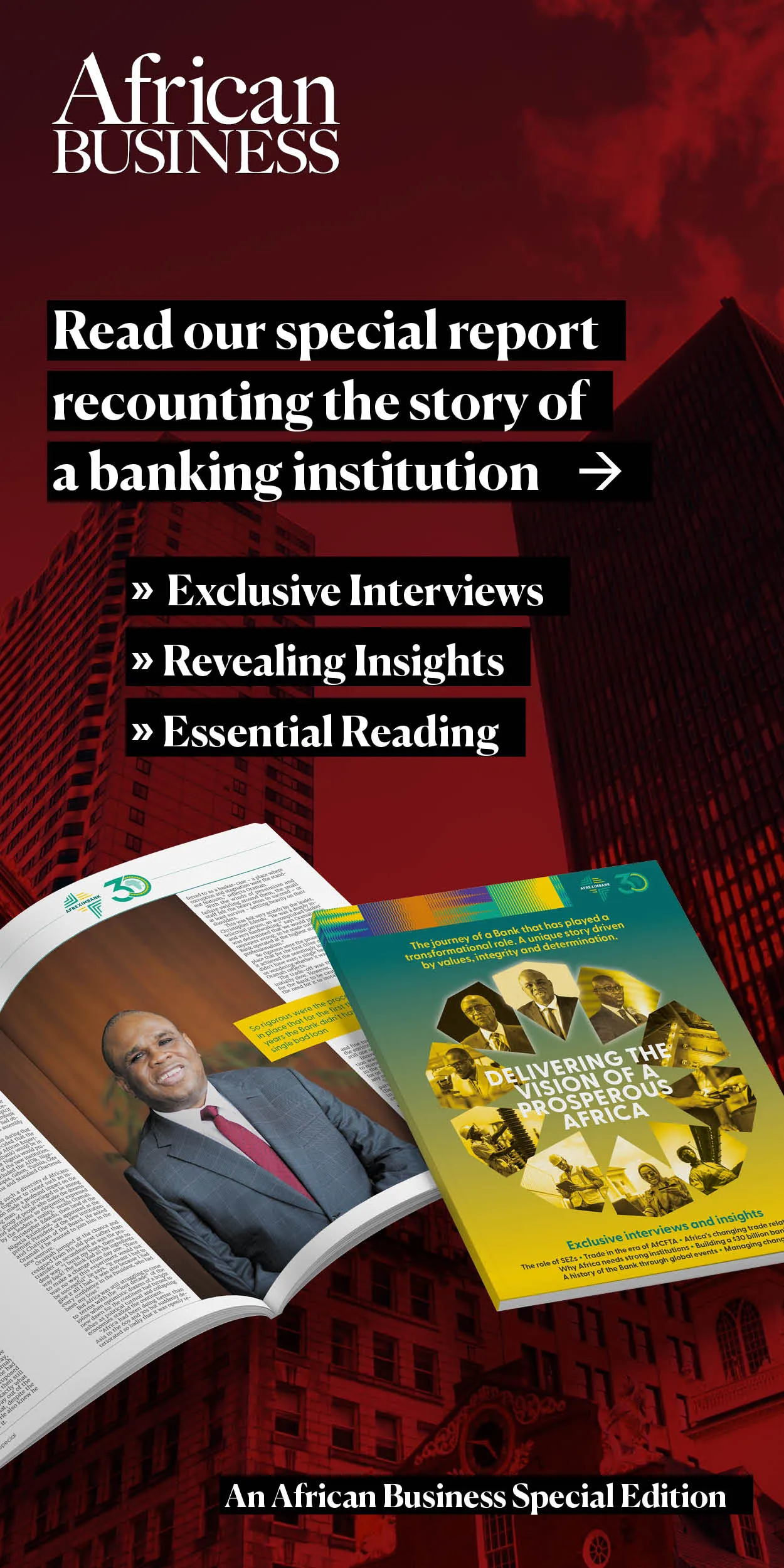This article was produced with the support of Afreximbank
As Afreximbank warned in its 2023 report on the continent’s growth prospects, Africa is facing a perfect storm of international crises that could undermine its trade prospects. High levels of inflation, the brewing US-China trade war, the conflict in Ukraine and the growing impact of climate change are collectively creating an uncertain investment environment.
Yet there is much that African economies can do to shape their own export prospects – not least coming together to promote much greater trade within the continent.
According to the United Nations Conference on Trade and Development (UNCTAD), global trade reached a record $32 trillion in 2022, divided between $25 trillion trade in goods, a 10% rise on 2021; and $7bn in services, a 15% increase. Most regions benefitted but unsurprisingly Russia was by the far the worst performing major economy, with an 18% fall in the value of trade over the course of the year.
There was actually a $250bn decline in the value of manufactured goods – equivalent to 0.5% – in the final quarter of 2022 – with weak results in developing countries, particularly in Latin American and East Asian economies. However, the volume of international trade continued to increase, which suggests that the fall in value was the result of some softening of post-pandemic price rises.
The value of global trade declined in the fourth quarter of 2022 in comparison with the same period in 2021 in all sectors apart from agri-food, energy and road vehicles. The biggest falls were for communications and office equipment, textiles and pharmaceuticals.
One bright spot in 2022 was a 4.25% annual increase in the value of environmental manufactured goods. Trade in environmental goods totalled $1.9 trillion last year, accounting for 10.7% of total trade in manufactured goods.
Environmental goods and services are those used to prevent or minimise pollution and degradation, including wind farms and solar power plants but also cycle paths, water processing plants and biodiversity programmes.
The transition towards a greener global economy is likely to exert growing influence over patterns of international trade but Africa has much ground to make up.
Global trade prospects
UNCTAD expects global trade to have continued stagnating in the first quarter of 2023 but forecasts significant growth in the second half of the year, resulting in a 1% rise in the value of goods and 3% in services over the year as a whole.
The outlook remains uncertain, although there are several grounds for optimism, including the easing of the logistics bottlenecks that emerged after the pandemic.
At the same time, the appreciation of the US dollar came to a halt in late 2022 and its value has since fallen somewhat, helping to fuel international trade as so many trade deals are dollar denominated. The economic outlook in most major economies has improved, with increased demand in China and both the EU and US now expect to avoid a recession in 2023.
On the other hand, inflation remains stubbornly high in many industrialised economies and also parts of Africa, so central banks have already ramped up interest rates but there is a limit to how much further they can be increased.
As a result, tighter monetary supply is affecting emerging markets in particular because they are more vulnerable to capital flow volatility. Debt access has been strained in Africa, with sovereign debt issuance on the continent falling from $20bn in 2021 to $6bn last year, while there are concerns over debt levels in both the industrialised and the developing world.
At the same time, global trade conflict and associated protectionism, particularly between the US and China, threatens trade between the world’s two biggest economies.
Afreximbank Chief Economist Hippolyte Fofack commented: “Trade restrictions increased dramatically over the past year, unlike in the era of the 2008 financial crisis, when there was a growing commitment to international cooperation and a concerted effort to boost cross-border trade and drive output expansion.”
The World Trade Organisation has cut its forecast for global trade growth for 2023 from 3.4% to 1% because of the range of threats but if the US Federal Reserve and other key central banks begin cutting interest rates later this year, global growth prospects should improve. Moreover, the relaxation of Covid lockdown measures in China could release more pent-up domestic demand.
China’s economic outlook is particularly important, as a single percentage point increase in Chinese domestic investment results in a 0.6% increase in Sub-Saharan economic growth.
China-Africa bilateral trade reached a record $282bn last year, an 11% rise on 2022, comprising $164bn Chinese exports and $118bn African exports. As usual, African exports were dominated by oil, copper and cobalt but African agricultural exports are now growing strongly.
Balance of African exports
The African continent’s trade performance in 2022 was roughly on a par with the rest of the world. For the year as a whole, African exports increased 3% and imports 1%, although the fourth quarter saw a 3% fall in imports and a more modest 1% rise in exports.
However, the outlook for Africa this year is more optimistic, with Afreximbank forecasting 4.1% growth for the continent spread across most economies but with just 0.5% for South Africa, as power shortages and unreliable logistics infrastructure compounds the impact of many years’ weak growth. It forecasts East Africa to be the fastest growing region at 5%, with Rwanda (6.7%) among the standout performers.
According to World Bank figures, Sub-Saharan Africa as a whole exported $446bn in 2021, a big rise from $329bn in the Covid affected year of 2020 but still down from the peak of $539bn in 2012. The region’s export revenues fluctuate considerably from year to year according to changes in commodity prices.
Greatly increasing the proportion of manufactured and processed goods, as well as services, in the export mix would help to smooth out these variations.
Africa’s biggest exporter in 2021 was South Africa with $130bn and as Table 1 shows it has a diversified range of exports. It is followed by Nigeria ($47bn), Angola ($29bn), Ghana ($23bn), Democratic Republic of Congo (DR Congo) ($22bn), Cote d’Ivoire ($16bn), Kenya ($11bn), Zambia ($11bn), Gabon ($11bn) and Guinea ($10bn). Commodity exporters dominate this list, with Nigeria, Angola and Gabon reliant on oil, and DR Congo, Zambia and Guinea on mining
African intra-block trade
Efforts have already been made to promote trade within Africa’s various regional trading blocs. The Southern African Development Community (SADC) has been the most successful to date, with intra-bloc exports reaching $44.3bn, equivalent to 18% of member states’ total exports of $245.6bn, in 2021, although most of this is driven by South Africa.
Intra-bloc exports accounted for 14.5% of total exports in the East African Community in 2021, with $7.2bn out of $49.7bn. However, the EAC figure is dragged down by DR Congo exporting just 5.1% of its total exports to the rest of the Community. Although eastern DR Congo was historically economically most connected to East Africa, this relationship has faded in recent decades and it only joined the EAC in March 2022.
Intra-bloc exports within West Africa’s ECOWAS were just $12.7bn in 2021, 11.2% of member states’ total exports, with Nigeria particularly badly connected to the rest of the region as just 5.9% of its exports go to the rest of the bloc.
Trade levels are even more limited with Central Africa’s CEMAC region, with just $585m of internal trade in 2021, just 2.5% of member states’ total exports. The economies of most countries in the region are dependent on the export of oil, mining commodities and timber to the rest of the world, with very little cross-border trade within the region.
The implementation of the African Continental Free Trade Area (AfCFTA) should boost the continent’s long term growth prospects. The immediate effect this year will be rather limited but it should see further groundwork implemented to open up future intra-African trade.
UNCTAD calculates Africa’s current untapped export potential at $21.9bn, equivalent to 43% of intra-African exports, but believes $9.2bn of this can be tapped through partial tariff liberalisation under the AfCFTA over the next five years.
Unlocking potential
Fully unlocking this potential will require substantial progress on eroding tariffs and non-tariff barriers, infrastructural improvements and improved access to market information.
Many African governments are working to improve the regulatory regime for export orientated businesses. According to the most recent Standard Bank Africa Trade Barometer index, Uganda had the most attractive trade regime in East Africa in the first half of 2023, moving up to fourth in its table of 10 African major economies, ahead of Kenya and Tanzania.
Ease of credit, government support for trade and import and export growth prospects are all cited as attractions for investors in Uganda, although participants in its survey said that business taxes were still too high and there was some uncertainty over specific duty levels. The country has traditionally relied on Kenya as a trading partner but it is now making use of the growing EAC and already exports about $600m of goods a year to DR Congo.
South Africa was ranked first in the table, followed by Ghana and Namibia but Ghana’s attractiveness appears to be falling. The Standard Bank report said: “Fewer Ghanaian businesses are interested in engaging in cross-border trade in the future… The perception of government support of trade is significantly lower among Ghanaian firms, and high import/export tax rates contribute to the belief that foreign trading is difficult.”
The Standard Bank report said: “Fewer Ghanaian businesses are interested in engaging in cross-border trade in the future… The perception of government support of trade is significantly lower among Ghanaian firms, and high import/export tax rates contribute to the belief that foreign trading is difficult.”
Outlook
Looking ahead, Africa’s net oil exporters should benefit from continued relatively high crude prices, with many sources forecasting average prices in excess of $80/barrel. However, production is falling in Angola, Congo-Brazzaville and Equatorial Guinea, although Mauritania and Senegal are on the verge of exporting LNG for the first time.
South Africa has the potential to benefit from buoyant international demand for manganese but problems on its two biggest dry bulk railways could continue to constrain coal and iron ore exports.
The completion of Africa’s biggest oil refinery in May could boost intra-regional trade in West Africa over the next couple of years. Until now, Nigeria has been forced to import more than 80% of its diesel, petrol and other refined petroleum products. The completion of the $19bn Dangote plant at the new port of Lekki outside Lagos will slash Nigerian imports and could boost intra-African trade if the plant exports products across the continent.
According to the Central Bank of Nigeria, the cost of the country’s refined petroleum product imports jumped from $8.4bn in 2017 to $23.3bn in 2022 and would have been on track to reach $30bn a year by 2027 if the refinery had not been completed.
Similar projects that displace non-African imports with African production would go a long way to changing the continent’s balance of trade for the better.

 Sign in with Google
Sign in with Google 
